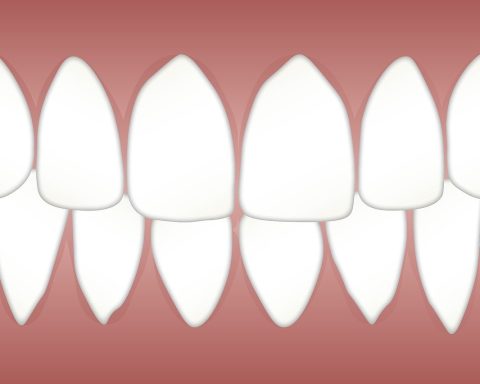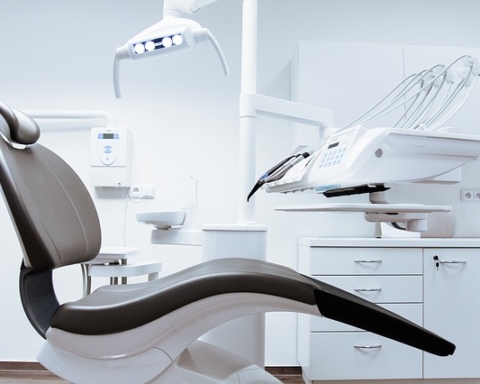The All-on-4 approach requires just four implants per jaw, in contrast to the usual method of placing eight to ten implants per jaw required for a complete mouth of implants. Because of the reduced bone density, often five or six implants are required for the upper jaw.
Implants in the back that are angled for maximum strength
The back implants are not placed in a vertical orientation but rather at an inclination of about 30-45 degrees. Even patients with bone loss may benefit from All-on-4 thanks to this approach, which eliminates the need for an expensive and time consuming bone transplant.
The capability of being fitted and implanted in a single day
You won’t have to hold off on getting your new teeth until the whole healing period for your All-on-4 dental implants has passed. Because of this final quality, people sometimes refer to them as having “teeth in a day,” “smiling in a day,” or “same day teeth.”
The conventional implant treatment may take as long as six months or even longer to finish, and it requires a significant amount of recuperation time at each stage of the process. This new approach is a significant advancement over the older methods.
People who desire a rapid restoration of their whole arch have options outside just this one approach.
Advantages of the All-on-4 technique
There are several advantages to getting all-on-4 dental implants rather than traditional implants or dentures. These are the following:
- Rapid healing both during therapy and after it
- Implants are inserted the same day when teeth are removed.
- Structure that is both comfortable and dependable for supporting crowns and bridges.
- Stuck in place; there is no need to take it off to clean it.
- Try not to trip or lose your footing.
- Patients who have lost jaw bone may benefit from this treatment.
- Less expensive than conventional methods, which often include 8–10 implants
Who should receive All-on-4 implants?
That is the question you should ask a dentist who knows about this procedure such as https://www.nuviasmiles.com/blog/all-on-4-dental-implants for more information.
Patients who are good candidates for all-on-4 are those who meet the following criteria:
- Have put off getting their teeth cleaned for a very long time.
- Have teeth that are beyond repair or restoration.
- People who are self-conscious about the appearance of their teeth and are looking for an improved option to dentures may benefit from this procedure as well.
An All-on-4 implant procedure may be completed for these individuals in about an hour if they come to the dentist clinic with their natural teeth that are in a state that cannot be restored. They will leave the office with a gleaming new smile and a whole set of fresh new teeth.
The only potential drawback to this therapy is that it requires the patient to have between four and six implants placed in their jaw, each of which will have a fixed prosthesis attached to it. Maintaining good oral hygiene requires more effort than just having an implant and a crown for each lost tooth.
All-on-4 vs. Dentures
There is a common misunderstanding that leads people to refer to All-on-4 implants as “All-on-4 dentures.” To replace a whole set of teeth, one of the most common methods is to utilize a gum-colored acrylic foundation with teeth made of resin or porcelain.
- Four-in-one dental implants are expensive.
- All-on-4s have a very natural feel to them, in contrast to traditional dentures.
- Dentures are removable replacement teeth that are secured in place over the gums by either the gums’ natural suction or a dental glue. Dentures (https://en.wikipedia.org/wiki/Dentures) that fit the patient correctly should eliminate the need for adhesives.
Dentures may become loose because the bone that supports them recedes over time since there are no teeth to keep it in place. This change in form is what causes dentures to become less secure. This indicates that they need frequent replacement in order to prevent pain and issues related to eating.
Dentures that may be removed are often constructed to the patient’s specific mouth dimensions in order to ensure a comfortable fit. The top denture covers the palate while the bottom one is horseshoe-shaped to accommodate the tongue. They need to be taken out of the way for cleaning, which often takes place overnight.
All-on-4 implants, on the other hand, are permanently anchored into place and are designed to mimic the look, chewing ability, and overall comfort of natural teeth. After having All-on-4 implants placed, there is no danger of them moving about or falling out of their proper position even if the user is eating or talking.
When compared to dentures, the prosthetic teeth may be attached to a synthetic gum, although this only covers a tiny portion of the patient’s natural gum tissue. When you smile, no one will be able to see the joint since it is concealed sufficiently enough beneath the lips. Dentures have an obvious economic benefit over implants of any sort; nonetheless, dentures need to be changed on average every five years.
Snap-in implant dentures are a tooth replacement approach that may be thought of as falling somewhere in the middle between traditional removable dentures and the All-on-4 implants procedure for replacing missing teeth. While they don’t provide as much stability as All-on-4s, they do provide a level of comfort that is unmatched by dentures. They are taken out of the mouth at night, much like dentures.
All-on-4 vs. Normal Implants
A mix of dental bridges that are supported by implants and single-tooth implants is the traditional approach that is used when replacing a whole jaw’s worth of teeth.
It’s possible to support many ‘teeth’ on either end of a bridge, instead of only one implant for each tooth. To replace all of a patient’s teeth with this method typically takes between 8 and 10 implants per jaw.
Even though both methods include boring sockets into the jaw bone, the All-on-4 procedure needs a smaller number of implants. Because of this, the procedure will be completed more quickly, with less effort, and with the patient experiencing less discomfort. Because less time and fewer resources are needed, it also has the potential to be much more cost-effective.








